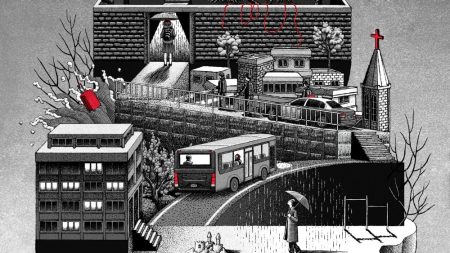Argentina Battles Devastating Wildfires: A Crisis of Unprecedented Proportions
A Nation Engulfed in Flames
Argentina is grappling with one of its most severe environmental crises in recent history as wildfires tore through the northeastern part of the country, consuming up to 250,000 hectares of land since January. The affected regions include the province of Corrientes and the remote southern area of Patagonia, a region renowned for its pristine natural beauty and biodiversity. Fires have raged uncontrollably, fueled by drought and extreme heat, with temperatures reaching as high as 40 degrees Celsius in recent days. The situation has become dire, with firefighters working tirelessly to contain the blazes, but their efforts have been hampered by the sheer scale and intensity of the fires. The crisis has already claimed lives, destroyed homes, and disrupted entire communities, leaving the nation in a state of distress.
The Human Toll of the Crisis
The impact of the wildfires extends beyond the environmental devastation; it has also taken a heavy toll on human lives. In the village of Mariano I. Loza, a 30-year-old teacher lost her life while attempting to save her father’s field from the encroaching flames. Her tragic death serves as a heartbreaking reminder of the vulnerabilities faced by those living in rural areas, where access to resources and assistance can be limited. Further south, in the tourist town of El Bolson, an 80-year-old man succumbed to smoke inhalation, adding to the growing list of casualties. These deaths have sent shockwaves through local communities, highlighting the fragility of life in the face of such destructive forces.
Environmental Factors Exacerbate the Crisis
The region’s parched landscape, exacerbated by a prolonged drought, has created the perfect conditions for wildfires to spread rapidly. The combination of dry vegetation, intense heat, and strong winds has made it difficult for firefighters to contain the blazes. In Corrientes, the fires have consumed vast areas of farmland and pine forests, destroying livelihoods and ecosystems that took decades to grow. Meanwhile, in Patagonia, a region celebrated for its jagged Andean peaks and expansive grasslands, the situation is equally dire. Greenpeace Argentina has reported that Patagonia is experiencing its worst wildfire season in three decades, with blazes engulfing iconic areas like Lanin National Park and the valley of El Bolson. The environmental toll of these fires is immeasurable, with concerns growing about long-term damage to biodiversity and ecosystems.
Illegal Logging and Arson: Compounding Factors
While natural factors such as drought and heat have played a significant role in the spread of the wildfires, human activities have also been implicated in the crisis. Greenpeace has pointed to illegal logging as a contributing factor, highlighting how unauthorized deforestation has left the land increasingly vulnerable to fires. In some areas, authorities suspect that arson may have been the cause of the blazes, further complicating efforts to address the crisis. These allegations underscore the need for stricter enforcement of environmental protections and the importance of holding perpetrators accountable for their actions. The interplay of natural and human-induced factors has created a perfect storm, making it challenging to combat the fires effectively.
The Fight Continues: Firefighters on the Frontlines
Firefighters in Argentina are working around the clock to contain the wildfires, but their efforts have been met with significant challenges. In El Bolson, the local fire chief, Alejandro Namor, expressed the exhaustion felt by his team, stating that while residential areas are no longer in immediate danger, extinguishing the flames in wooded regions could take until March or April. The prolonged nature of the crisis has taken a toll on emergency responders, who are working under incredibly difficult conditions. Despite their efforts, the fires have already destroyed more than 120 homes and forced the evacuation of over a thousand families. The resilience of these firefighters serves as a testament to their dedication, but the scale of the disaster demands a more comprehensive and coordinated response.
A Path Forward: Government Intervention and Community Resilience
In response to the crisis, Argentina’s security and defense ministers, Patricia Bullrich and Luis Petri, announced the creation of a Federal Emergency Agency during a recent visit to the affected areas. This move signals a commitment to improving disaster response and recovery efforts, but the road ahead will be long and arduous. Communities are coming together to support those affected, with local organizations and residents playing a vital role in relief efforts. The resilience of the Argentine people in the face of this tragedy is inspiring, but the wider implications of the wildfires serve as a stark reminder of the urgent need for sustainable environmental practices and robust disaster preparedness. As the nation battles to contain the flames, the focus must also shift to preventing such crises in the future and rebuilding the lives of those affected.









